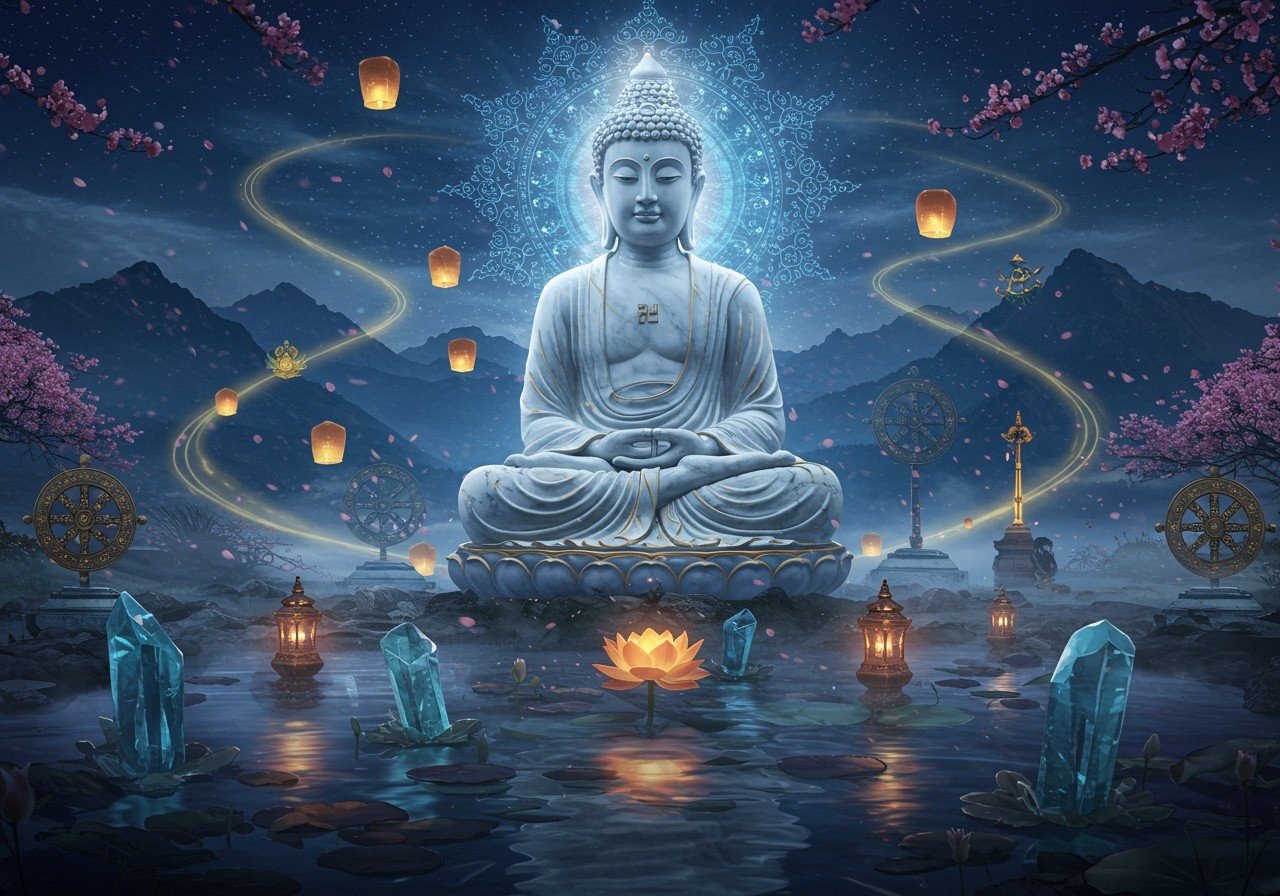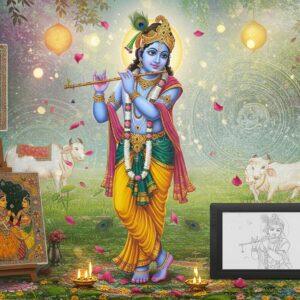
Buddhist art and symbolism have captivated people worldwide for centuries. These artistic expressions, rooted in the teachings of Gautama Buddha, convey profound spiritual meanings and rich cultural heritage. This article delves into the world of Buddhist art and symbolism, exploring their origins, evolution, and diverse interpretations.
Historical Context of Buddhist Art
Understanding the origins and evolution of Buddhist art provides valuable insights into its development. Early Indian influences, including Mauryan and Gandharan styles, played a significant role. Initially, Buddhist art featured aniconic representations, such as footprints or trees, indirectly symbolizing the Buddha. Over time, iconic representations emerged, depicting the Buddha directly.
Buddhist art spread throughout Asia, showcasing regional variations in styles and techniques. Key sites like the Ajanta Caves and Sanchi Stupa highlight its historical significance. Patronage from rulers and wealthy merchants greatly contributed to its development. As Buddhist art traveled beyond India, it integrated local cultural elements, enriching its diversity.
Key Symbols in Buddhist Art
Buddhist art is replete with symbols carrying deep meanings. Here are some essential ones:
- The Dharma Wheel (Dharmachakra): Represents Buddha’s teachings, the Eightfold Path, and the cyclical nature of existence. It is often depicted with eight spokes, each representing a step on the path to enlightenment.
- The Lotus Flower: Symbolizes purity, enlightenment, and spiritual awakening. Just as the lotus rises from muddy water to bloom beautifully, so too can individuals rise above life’s challenges to achieve enlightenment.
- The Bodhi Tree: Associated with Buddha’s enlightenment, representing wisdom and awakening. It is a sacred symbol in Buddhism, marking the spot where Siddhartha Gautama attained enlightenment.
- The Stupa: Acts as a reliquary and symbolizes Buddha’s presence, often containing relics or remains. Stupas are places of reverence and meditation for Buddhists.
- The Endless Knot: Reflects interconnectedness, the cycle of life, and the concept of dependent origination. It symbolizes the infinite wisdom and compassion of the Buddha.
- The Two Golden Fish: Symbolize happiness, freedom from suffering, and the auspiciousness of the Buddha’s teachings. They are often depicted swimming together, representing harmony and unity.
- The Conch Shell: Represents the spread of Buddha’s teachings and the awakening call to dharma practice. It is also a symbol of royalty and authority in some cultures.
- Aum (Om): While often associated with Hinduism, Aum is also used in Buddhism, representing the ultimate reality and the universe’s sound. It is a sacred syllable chanted during meditation.
- Swastika: An ancient symbol representing good fortune and well-being, the swastika predates its appropriation by the Nazi regime. In Buddhism, it symbolizes auspiciousness and the Buddha’s footprints.
These symbols, often found in various forms of Buddhist art, deepen our understanding of Buddhist principles.
Iconography of Buddha
Buddha is depicted with distinct physical attributes and gestures in art:
- Physical Attributes: Urna (dot on forehead symbolizing wisdom), ushnisha (topknot representing enlightenment), and elongated earlobes (signifying royalty and past lives).
- Hand Gestures (Mudras): Bhumisparsha (earth-touching, calling the earth to witness Buddha’s enlightenment) and Dharmachakra (wheel-turning, symbolizing the turning of the wheel of dharma). Each mudra conveys a specific meaning.
- Postures (Asanas): Different postures symbolize various aspects of Buddha’s life and teachings, such as meditation and teaching. These postures can range from seated to reclining.
- Key Events: Artistic representations of Buddha’s birth, enlightenment, first sermon, and death (parinirvana) narrate his life story. These depictions serve as visual reminders of his journey.
- Cultural Variations: Differences in artistic styles reflect the diverse cultural influences on Buddhist art across various regions. These variations enrich the artistic heritage of Buddhism.
Poojn.in: Your Source for Authentic Buddhist Items
Looking to connect with Buddhist traditions? Poojn.in, India’s leading online store for cultural goods and services, offers a wide selection of authentic Buddhist items. Explore our collection to enhance your spiritual practice:
- Prayer Beads (Malas): Enhance your meditation practice with our high-quality malas. We offer a variety of materials, including wood and gemstones.
- Meditation Cushions (Asanas): Create a comfortable and supportive meditation space with our selection of cushions. Find the perfect asana to enhance your practice.
- Statues and Sculptures: Bring reverence and inspiration to your home with our beautifully crafted Buddhist statues and sculptures. Choose from a variety of sizes and styles.
- Ritual Items: Find all the essential ritual items for your Buddhist practice, including incense, offering bowls, and butter lamps.
Visit poojn.in today to discover more and enrich your spiritual journey. Also, explore our informative blog posts on related topics:
- Rudraksha and Tulsi: Sacred Hindu Symbols Explained
- Hindu Symbols Explained: Their Meanings and Importance
Conclusion
Buddhist art and symbolism offer a rich tapestry of meanings and interpretations, deeply connected to the spiritual and cultural aspects of Buddhism. By understanding the historical context, key symbols, and iconic representations of Buddha, we gain a profound appreciation for this art form. It reflects the journey of enlightenment, the teachings of Buddha, and the diverse cultural influences that have shaped it over time.


